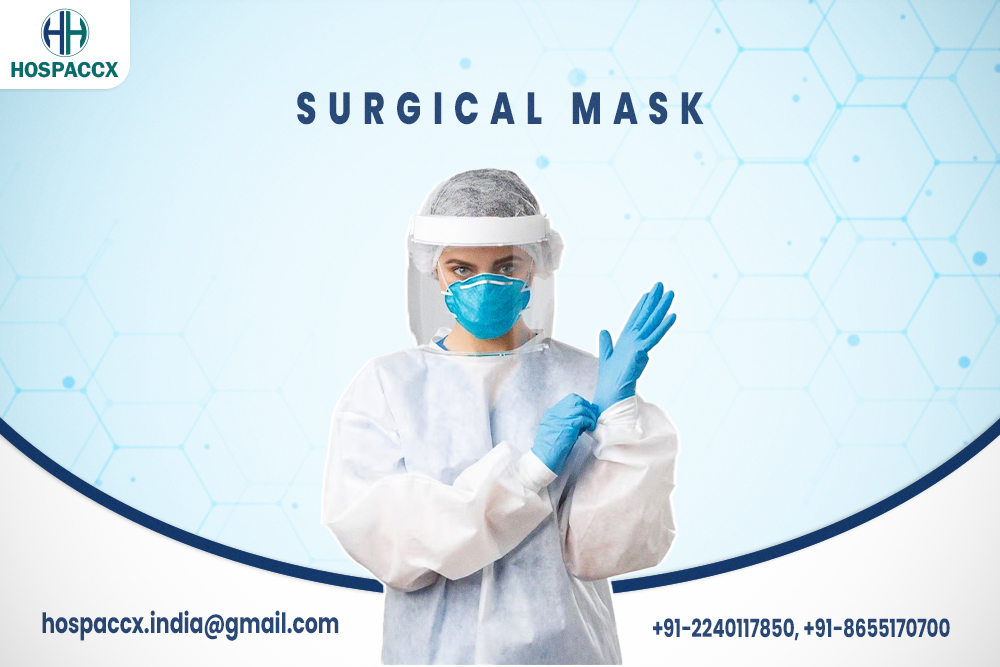Surgical Mask
Introduction
- A surgical mask, or procedure mask, is intended to be worn by health professionals during surgery and certain health care procedures to catch microorganisms shed in liquid droplets and aerosols from the wearer’s mouth and nose.
- Surgical masks are not designed to protect the wearer from inhaling airborne bacteria or virus particles.
- Without the manifold buffers afforded by a surgical mask, airborne diseases can be easily transferred via respiratory droplets
Types of Surgical Masks
- Double Ply Masks are made from 2 layers of spun bonded non-woven / thermally sealed waffle pattern polypropylene micro fibers with 1/6 inch center (with no break / hole visible), providing excellent filtration and absorption.
- Three Ply Masks has 3 layers of folding in vertical direction to cover the mouth, nose and chin. It creates a dome shape when worn. Both inner and outer layer of the masks is made with non-woven fabric.
- Cotton Masks: In low resource settings, the provision of single-use surgical masks and respirators may not be feasible. Instead, various types of cloth masks (i.e. cotton/ woven or gauze) are also widely utilized in various healthcare settings in resource-poor countries. In countries such as China and India, where the historical risk from emerging infections is high, use of cloth masks by health workers (HCWs) is widespread.
- N95 Mask: A disposable N95 mask (respirator) is a safety device that covers the nose and mouth and helps protect the wearer from breathing in some hazardous substances. An N95 mask protects you from breathing in small particles in the air such as dust and mold. It is designed to filter out at least 95% of the dust and mold in the air.
Global Market of Surgical Face Mask
- In 2016, the surgical face masks production volume for the Japanese market amounted to approximately 4.9 billion pieces, up from about 1.8 billion masks in fiscal year 2008.
- In 2016, the global face masks market was valued at about 28.9 billion U.S. dollars, and is forecasted to reach to 37.1 billion dollars by 2020.
- In 2017, the market value of face masks in the Asia Pacific region amounted to about 5.28 billion U.S. dollars.
- The market value of face masks in China grew by 16% between 2013 and 2016.
- In 2017, Asia Pacific held about 53% of the total facial masks launches worldwide, followed by Europe with a 33% market share that year.





Related Team Members
Related Services
Other Industries
Related Blog
Related Success Stories











